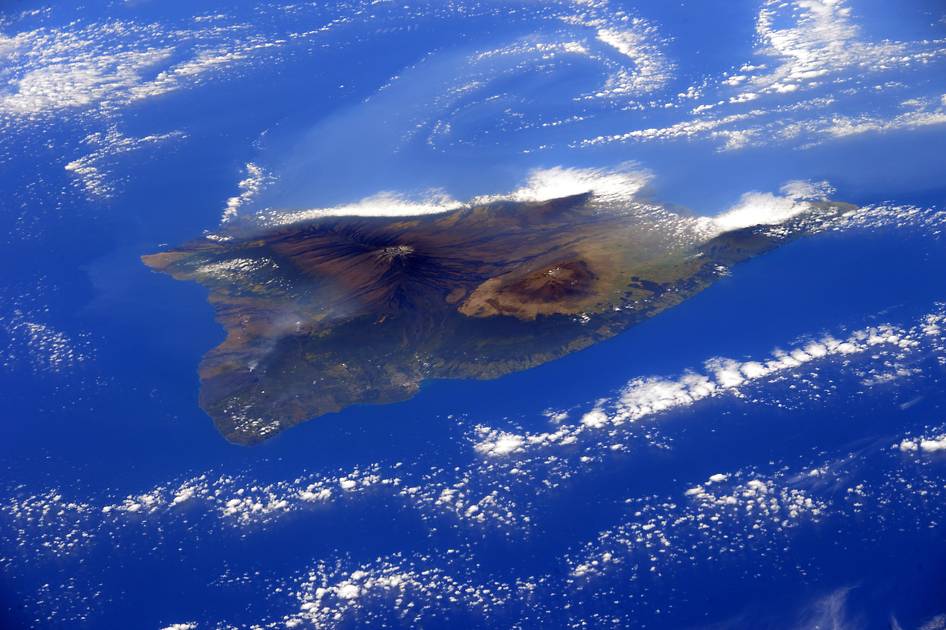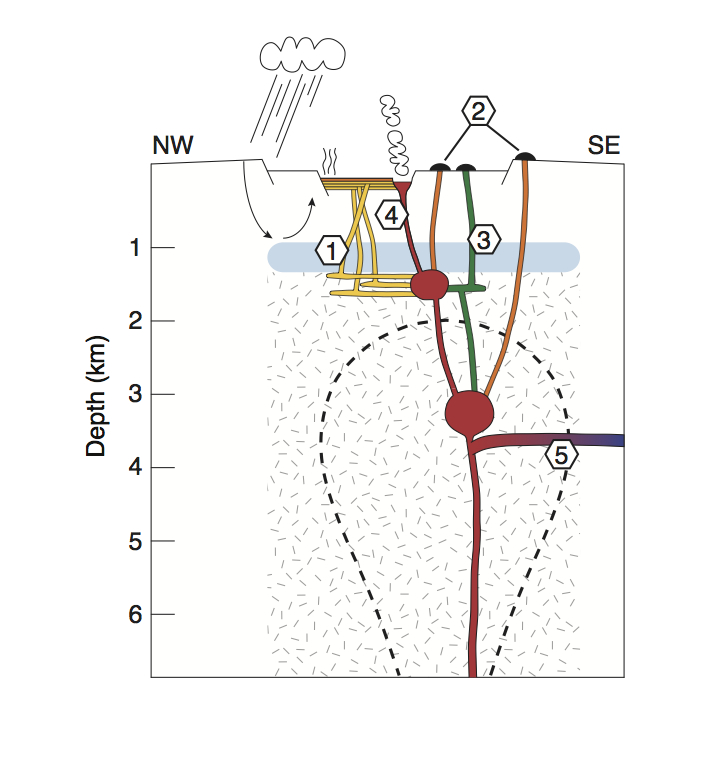Double the Trouble Found Under Hawaii's Kilauea Volcano

Hawaii's big, booming eruptions are born from just under Kilauea volcano's peak, a new study confirms.
Two small reservoirs of molten rock (magma) feed Kilauea's recent eruptions, according to analysis of chemical tracers from the last 50 years of lava flows. The results suggest that Kilauea volcano also taps a deeper source, because the shallower magma chambers are too tiny to account for all of the lava that has streamed across the island's surface since 1983.
"The amount of magma is very small," said lead study author Aaron Pietruszka, a U.S. Geological Survey geologist based in Denver. "You have to have a constant supply of new melt [magma] coming from below, because the volcano itself can't supply everything that's erupted since 1983."
The size of both magma chambers adds up to less than half a cubic kilometer (0.12 cubic miles) of molten rock, Pietruszka told Live Science. Since the current eruption kicked off in 1983, Kilauea has belched about eight times that amount of molten rock, or some 4 cubic km (nearly 1 cubic mile) of lava, he said. [Explosive Images: Hawaii's Kilauea Erupts for 30 Years]
Pietruszka and his co-authors located the underground magma chambers by analyzing lead isotopes in Kilauea's lava rock. The isotopes, which are atoms of lead with different numbers of neutrons, trace the lava's history as it traveled underground before erupting. "Lead isotope ratios are like fingerprints imprinted on the magma before it enters the shallow plumbing system," Pietruszka said. "When you start building up many analyses, you can see patterns in the lead isotope ratios."
Kilauea is a single volcano with two very distinct lead isotope ratios in its summit lavas, Pietruszka said. Lavas with higher lead isotope ratios come from Halema'uma'u Crater, and lavas with lower ratios erupted near the caldera rim. (Kilauea volcano is topped by a deep depression called a caldera, which a violent volcanic explosion carved out in 1790.)
The different lead isotopes suggest there are two magma sources beneath Kilauea's peak. "The only way to explain that is if there are two isolated, distinct magma bodies," Pietruszka said.
Get the world’s most fascinating discoveries delivered straight to your inbox.
The deeper source for Kilauea's eruptions, as with all of Hawaii's volcanoes, is a mantle plume beneath the oceanic crust, he said. The plume is a blob of hot rock that rose from deep inside the Earth and is now torching the crust, building Hawaii's long chain of volcanic islands, scientists think.
The chemistry matches up with geophysical surveys of the volcano, which have identified magma chambers under Kilauea's summit in the same spots. "We're now converging on a common model for how Kilauea works and what it looks like under the surface," said Michael Poland, a geologist at the Hawaii Volcano Observatory who was not involved in the study.
One reservoir sits less than 1.2 miles (2 km) beneath Halema'uma'u Crater, where a bubbling lava lake emerged in 2008. The other reservoir is slightly deeper and larger, and rests about 1.2 to 2.4 miles (2 to 4 km) under the caldera's south rim.
Separate geophysical measurements suggest the magma chambers are somewhat larger than indicated by the chemical tracing, both Poland and Pietruszka noted. This could mean there is more molten rock than the chemical analyses indicate. But many researchers now think that in volcanic reservoirs like those beneath Kilauea, the rock is more like a slushy porridge, a mix of warm crystals surrounded by magma.
"Geochemists see the fluid part of the system, and geophysicists might see the movement of magma plus these hot, deformable crystals," Pietruszka said. "I think that explains the discrepancy between the [size] estimates."
The researchers published their study March 2015 in the journal Earth and Planetary Science Letters.
Follow Becky Oskin @beckyoskin. Follow Live Science @livescience, Facebook & Google+. Originally published on Live Science.

 Live Science Plus
Live Science Plus






